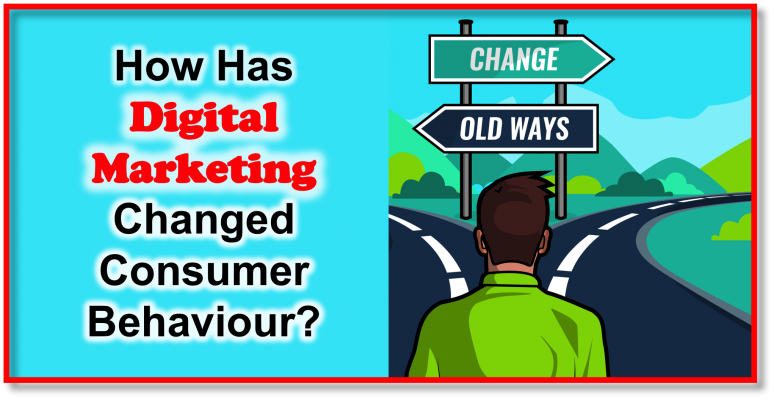What is Geo-targeting: Increase Conversions with Geolocation Marketing
Nowadays Geo-targeting is very useful in Digital Marketing. We often come across ads that emotionally connect with our locality highlighting some of its peculiarities. Such ads positively provoke the audience to explore the promoted products and services.
That is the psychology behind geo-targeted ads which elicit special interest among the audience and help producers to cash in on the regional flavor and personalization boosting sales and conversions.
In simple terms, geo-targeting is a variant of inbound digital marketing where a high degree of personalization is in play targeting customers chosen under clear parameters with a location bias.
The hyper growth and media attention on firms like Geofeedia also speaks of the rising importance of geo-targeting as a key enabler in marketing. This type of analytical platforms provides valuable location-based intelligence based on real-time social media conversations with insights and location-wise intelligence in supporting better strategies.
- Introduction
- Benefits of Geo-Targeting
- How does Geo Targeting Work?
- Geo-Targeting And Adwords
- Geo-Targeting With SEO
- Geo-Targeting With Facebook
- Geo Location Technologies
- Geo-targeting advertising
To the question, what is geo-targeting, the best answer could be delivering content to specific demographics based in chosen locations. It may be at the city or country or zip code level for which data from IP address; device ID and GPS signals are used.
At the same time, geotargeting is often confused with geofencing. Both are targeting strategies but the modus operandi is different. Understanding geofencing vs geo-targeting conundrum is very important.
Geofencing builds virtual barriers around locations using data from IP addresses. That limits beaming specific Ads on computers, tablets or mobile devices beyond a periphery.
Geofencing is used in optimum tapping of potential audience housed in universities, neighborhoods, stadiums etc for maximum local deals, businesses, or services.
Geo-targeting delivers content straight to consumers via mobile or web peppered with personal information concerning the user individual’s locality.
In geo-targeting, ads are delivered to pre-qualified audience residing within a defined radius. The parameters range from demographics, behaviors, interests, and location. Geo-targeting also uses exclusion techniques in optimizing results after enriching the content with keywords and demographics.
To decide, what suits a marketer better– geo-fencing or geo-targeting? The fact is both can be done on computers, tablets, mobiles, or gaming devices with internet facility. It all depends on the target customer.
If the plan is to cover an entire population of all sizes and ages and interests, geo-fencing is perfect with a broad advertising plan. If it is meant to hit a particular consumer cluster in a niche demographic, then the nimble way is geo-targeting.
Benefits of Geo-Targeting
Geolocation based marketing boosts business, hikes visibility and improves relationships with customers.
Geographic targeting is a real boon for marketers in managing their tight marketing budgets as it is innovative in optimizing efficiency for pay per click marketing campaigns.
To improve ROI and have more mileage from search marketing Geographic targeting and Ad scheduling are the most sought-after marketing tools.
Geo-targeting brings multiple benefits to companies. Foremost is cost saving. It stops the wastage of funds on national campaigns as more customers can be attracted via geo-targeting campaigns.
The potential of geolocation marketing is increasing sharply as social media advertising on Facebook, Instagram to curated stories appearing in Snapchat are on the upswing.
Supported by Rising Social Media
Market research agency Invesp says global social media ad revenue is heading to $15 billion in which 50 percent will be from mobile social media advertising fuelled mainly by geo-targeting.
Tools like Hootsuite called as Social Media Management Systems also offer feedback on what people say about brands in social media channels and these inputs help in planning a viable geo-targeting strategy.
Geo-targeting marketing ads achieve more clicks compared to plain vanilla ads. A simple example of geo-targeting is presenting a web page and ads in Spanish to a Spanish customer spiced with information about the city where he lives.
How does Geo Targeting Work?
There is an IP address associated with every device indicating location. The first three digits of the IP represent the country code and the succeeding digits refer to sub-areas. The information gleaned from the IP’s of visitors can be used for geotargeting the visitors.
Geo-Targeting Website
Developing a geo-targeting website is a better way to increase conversion goals which may be newsletter registrations, eCommerce, advertising impressions or any other purpose.
Normally a website will draw traffic from many parts of the world who may be speaking different languages, using different currencies and enjoying different climates. In leveraging the traffic commercially, geo-targeting is the sole way in ensuring that specific section of the traffic gets relevant content that will move them into action.
Audience targeting brings better accuracy to decide who must see the ads. Options in Google Ads Editor help to configure preferences and the campaign can also be geared for remarketing, life events and other categories.
Geo-Targeting And Adwords
Now small advertisers are also in a position to take advantage of location-based marketing thanks to Google Adwords geo-targeting.
It does not make any sense if ads are shown to people all over the world. People handling geo-targeting AdWords campaign acknowledge the benefit of limiting the scope of the ad to the relevant audience for best results.
Adwords geographic targeting saves cost by blocking ad appearance in areas irrelevant to a business and save burn out of the marketing budget.
Geo-Targeting With SEO
Prominent search engines like Google are also using geo-targeting in making search results relevant. In fact, Google has become very advanced in its geo-targeting SEO algorithm.
Country-based top-level domains (TLD) are the key players in deciding search engine rankings with a local bias in respect to the location of the searcher.
One example is– www.moneybag.ca ranked for the search term online commercial loans will appear differently in different searches.
Depending on the searcher’s location the rank will vary depending on the search engines used which are targeted at different countries.
If the term is searched in the US using www.google.com www.moneybag.ca will get ranked at 80. That is because the domain’s.ca TLD is a Canadian domain and not relevant to US-based searchers. Therefore, the results will show predominantly US-based websites.
On the other hand, the searcher in the US is using www.google.ca for the same query, the mentioned website will be within the top 10 results. Again if the searcher goes to Canada and tries the query in www.google.ca, the rank in SERP will improve to top 5 results.
Geo-Targeting With Facebook
Those in Facebook business will know how Facebook geotargeting is delivering a productive audience in specific geographical locations to bring maximum returns to the budget.
Facebook geotargeting is near perfect in leveraging the best revenue opportunity from geo-targeting with insights to marketers on prospective customers. It is helping companies and brands to make money by dovetailing geotargeting into social media advertising campaigns.
Retail stores with physical locations find geo-targeting as very effective in drawing the attention of customers using local awareness advertising.
Their local awareness ads not only bring new customers to stores but also cut costs of customer acquisition.
The way Bonobos, an online male outfit store used geo-targeting speaks of its success. It opened “stores” without any mass advertisements but targeted ads to a small area within a particular radius of the shop. This saved money by attracting more traffic to the pop-up shops.
Geo-targeting Software
In making marketing a less complex endeavor segmenting audience is the right way to go using geo-targeting software that targets the IP address or ISPs to identify the city from where a user is accessing a site.
Segmentation of audience on the basis of age, gender and income with demarcated demographics in various locations result in better ad campaigns has been proved by Evo, an e-commerce retailer selling sporting goods.
It launched an email blitz announcing a $200 shopping discount aiming local users and derived nearly 60% conversion from mobile users.
Make Custom Landing Pages
Creating separate landing pages for different locations is another example of geo-targeting. GrubHub website, when accessed from Boston, will look different from what is viewed in San Francisco. This attempt at varied engagement with a higher degree of personalization is also geo-targeting that can get good traffic and higher CTR for business websites.
Match Currency
Explore different avenues regarding another money dependent on a district or nation. You might need to keep it straightforward and attempt it on one prominent item or point of arrival. Measure deals in a blend with the area – are the transformation rates any unique in the event that you show the cash of the guest’s nation?
Etsy.com does this well by showing a wide assortment of monetary forms for the items on special. Here is a scan for “Star Wars” adornments from London, note costs are in GBP:
And the same search from Brazil shows the prices in BRL:
Geo-targeting Advertising
Case studies and relevant metrics suggest geo-targeting advertising boosts the performance of marketing ranging from email campaigns to paid search.
Geo-targeting directs marketing campaigns to specific areas with special attention on age, gender, income etc making campaigns successful with a higher rate of conversions and sale.
Data from the Local Search Association’s Insights database says all business verticals can reap success from effective geo marketing based campaigns.
Click-through rate (CTR) for geotargeted mobile display ads is always higher than the industry average for all verticals. Geotargeting efficacy will only increase as mobile penetration is rising yielding precise location data.
Geo Location Technologies
One interesting insight of Global Location Trends Report is that a majority of 250 odd world marketers including Starbucks, and Coca-Cola affirm that proximity marketing is critical in their businesses growth.
In the same report, the boom of location technologies including Wi-Fi, GPS, and beacons are also mentioned. They are growing at a whopping 63% as marketers are investing heavily in them.












